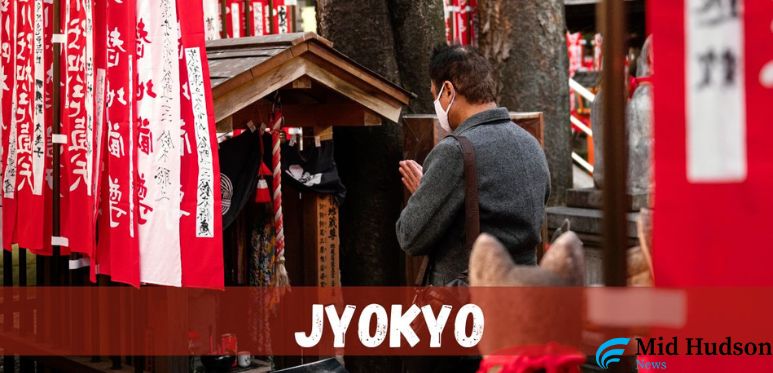Short answer first: Jyokyo (Japanese: 状況, romanised jōkyō) means “situation”, “state of affairs”, or “circumstances”. It’s a practical word you’ll hear in everyday chat, at work, and in news reports—yet it also hints at a wider cultural habit of reading context, preserving harmony, and choosing actions that fit the moment.
What Does Jyokyo Mean? (The essentials)
- Literal sense: the current state of things; what’s happening around you.
- Everyday role: used to ask for updates, explain decisions, or add nuance—similar to “depending on the situation”.
- Why learners care: mastering jyokyo helps you speak naturally and make sense of how Japanese communication adapts to context.
Kanji: 状況
Kana: じょうきょう
Romaji: jōkyō
Jyokyo as a Mirror of Cultural Values
Japanese communication often prioritises context and harmony. Jyokyo is the vocabulary of that mindset.
- Reading the room (空気を読む): You adjust tone or timing based on the jyokyo.
- Harmony (和): Knowing the jyokyo helps you contribute without friction.
- Practical empathy: You consider others’ workload, mood, or constraints before acting.
Simple analogy: If conversation is a dance, jyokyo is the music—hear it first, then move.
Formal & Professional Uses of Jyokyo
In business and official settings, jyokyo appears in fixed phrases and status talk.
Common workplace collocations:
- 現状/現在の状況 (genjō/genzai no jōkyō): current situation
- 状況報告 (jōkyō hōkoku): situation/status report
- 状況把握 (jōkyō ha’aku): grasping the situation
- 進捗状況 (shinchoku jōkyō): progress status
- 状況次第 (jōkyō shidai): depending on the situation
- 状況に応じて (jōkyō ni ōjite): in accordance with the situation
Polite sentence patterns:
- 状況を共有いたします。 (Jōkyō o kyōyū itashimasu.) We’ll share the situation/update.
- 現在の状況はいかがでしょうか。 (Genzai no jōkyō wa ikaga deshō ka?) How is the situation now?
- 状況に応じてご案内いたします。 (… go-annai itashimasu.) We’ll guide you according to the situation.
Jyokyo in Daily, Informal Conversation
Casual speech shortens and softens:
- 今どんな状況? (Ima donna jōkyō?) What’s the situation right now?
- その状況なら分かる。 (Sono jōkyō nara wakaru.) I get it in that situation.
- 微妙な状況だね。 (Bimyō na jōkyō da ne.) That’s a bit awkward.
- 状況見て決めよう。 (Jōkyō mite kimeyō.) Let’s decide based on the situation.
Contrast in tone: Formal uses are precise and deferential; casual uses drop particles or shorten forms to feel lighter.
Common Jyokyo Phrases to Sound Natural
- 緊急の状況 (kinkyū no jōkyō): an urgent situation
- 経済状況/市場状況 (keizai/jishō jōkyō): economic/market conditions
- 周囲の状況 (shūi no jōkyō): surrounding conditions
- 状況判断 (jōkyō handan): situational judgement
- 悪化する/改善する状況 (akka suru/kaizen suru jōkyō): worsening/improving situation
Jyokyo as a Mindset (Mindfulness in practice)
While jyokyo is not a religious term, it aligns with mindfulness-like habits:
- Attention: noticing what has changed (time, people, constraints).
- Non-reactivity: waiting a beat to choose the right response for the moment.
- Appropriateness: picking words and actions that fit the jyokyo, not just personal preference.
Zen-influenced aesthetics value timing, restraint, and presence. Thinking in jyokyo nudges you towards those qualities in everyday choices.
Misconceptions to Avoid
- “Jyokyo equals personal reasons” – not quite. That’s closer to 事情 (jijō), which means personal circumstances/reasons behind something. Jyokyo is the external situation or overall state of affairs.
- “It’s always negative.” No—jyokyo can be good, bad, or neutral.
- “It’s only formal.” It’s common in news and business, but you’ll hear it casually too.
Jyokyo vs Similar Words
- 事情 (jijō): personal circumstances, background reasons.
- 状態 (jōtai): state/condition (often static: health, machine state).
- 場合 (baai): case/if-scenario (“in case of…”).
- 環境 (kankyō): environment, surroundings (broader setting).
How to Apply Jyokyo in Daily Life
Workplace:
- Ask before acting: “現在の状況を教えてください。” (Please share the current situation.)
- Propose with flexibility: “状況に応じてプランBを用意します。” (We’ll prepare Plan B depending on the situation.)
Travel:
- Check context: weather, crowding, local customs—then adapt plans.
- Phrase it simply: “状況次第でルートを変えます。” (We’ll change the route depending on the situation.)
Relationships:
- Read emotional context: choose timing and tone.
- Try: “今の状況を理解した上で話したい。” (I’d like to talk after understanding the current situation.)
Jyokyo in the Digital Era
- Remote work: “status” becomes 状況共有 (jōkyō kyōyū)—sharing context so teams align.
- Online communities: Moderation and etiquette shift with jyokyo (topic sensitivity, volume of posts).
- Product design: Interfaces increasingly surface contextual options—essentially UI that reads jyokyo.
The Future of Jyokyo: Why It’s Spreading Globally
As cross-cultural teams collaborate more, situational awareness beats rigid scripts. Jyokyo offers a compact mental model:
- notice the context, 2) choose a fitting response, 3) adjust as the situation evolves. It’s practical, portable, and respectful—qualities that travel well.
Real-World Examples (Micro-scenarios)
- Meeting runs long: “Let’s move the last item to email—状況に応じて短縮します。”
- Customer support spike: “状況把握の上で返信時間を案内します。” (We’ll advise response times after grasping the situation.)
- Group dinner: “予約の状況次第で場所を変えるかも。” (We may change venue depending on the booking situation.)
Quick Reference: Build Natural Sentences
- X の状況を確認します。 I’ll check the situation of X.
- 状況が落ち着いたら連絡します。 I’ll contact you once things settle.
- 状況に合わせて調整します。 We’ll adjust to fit the situation.
- この状況では別案が必要です。 In this situation we need an alternative.
FAQs
1) Is jyokyo only for emergencies or bad news?
No. It’s neutral. You can use it for good, bad, or everyday updates.
2) How is jyokyo different from jijō?
Jyokyo = external situation; jijō = personal circumstances/reasons behind something.
3) Is jyokyo formal? Can I use it with friends?
It’s perfectly fine casually—just shorten and soften phrasing, e.g., “今どんな状況?”
4) What are useful business phrases with jyokyo?
状況報告 (situation report), 状況把握 (situational understanding), 進捗状況 (progress status), 状況に応じて (as per situation).
5) How do I ask for an update politely?
現在の状況をご共有いただけますか。 (Could you share the current situation?)
6) What’s a natural way to say “it depends on the situation”?
状況次第です。 (Jōkyō shidai desu.)
7) Is there a nuance difference between jōkyō and “context”?
Overlap exists, but jōkyō points to the current state more than background assumptions. For “context”, Japanese often uses 文脈 (bunmyaku) or 背景 (haikei).
Conclusion
Jyokyo is both a handy word and a helpful mindset. Learn the core meaning (“situation”), practise the set phrases for work and daily life, and notice how Japanese speakers adapt to fit the moment. Do that consistently and you won’t just speak better—you’ll navigate conversations with the calm, flexible judgement that jyokyo encourages.
Also read: Escapamento RD: Complete Guide to Boosting Your Motorcycle’s Performance and Sound








